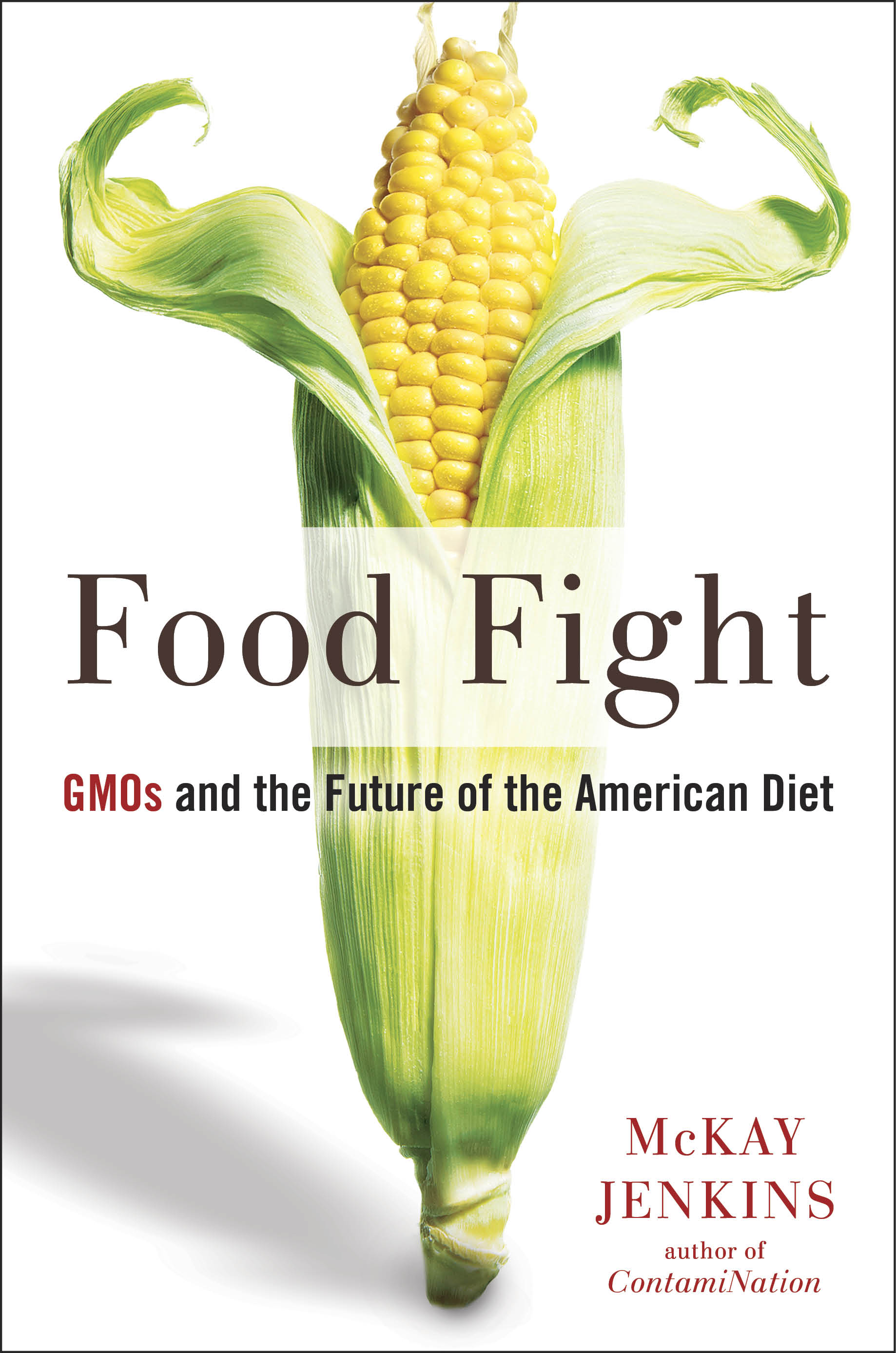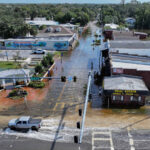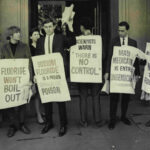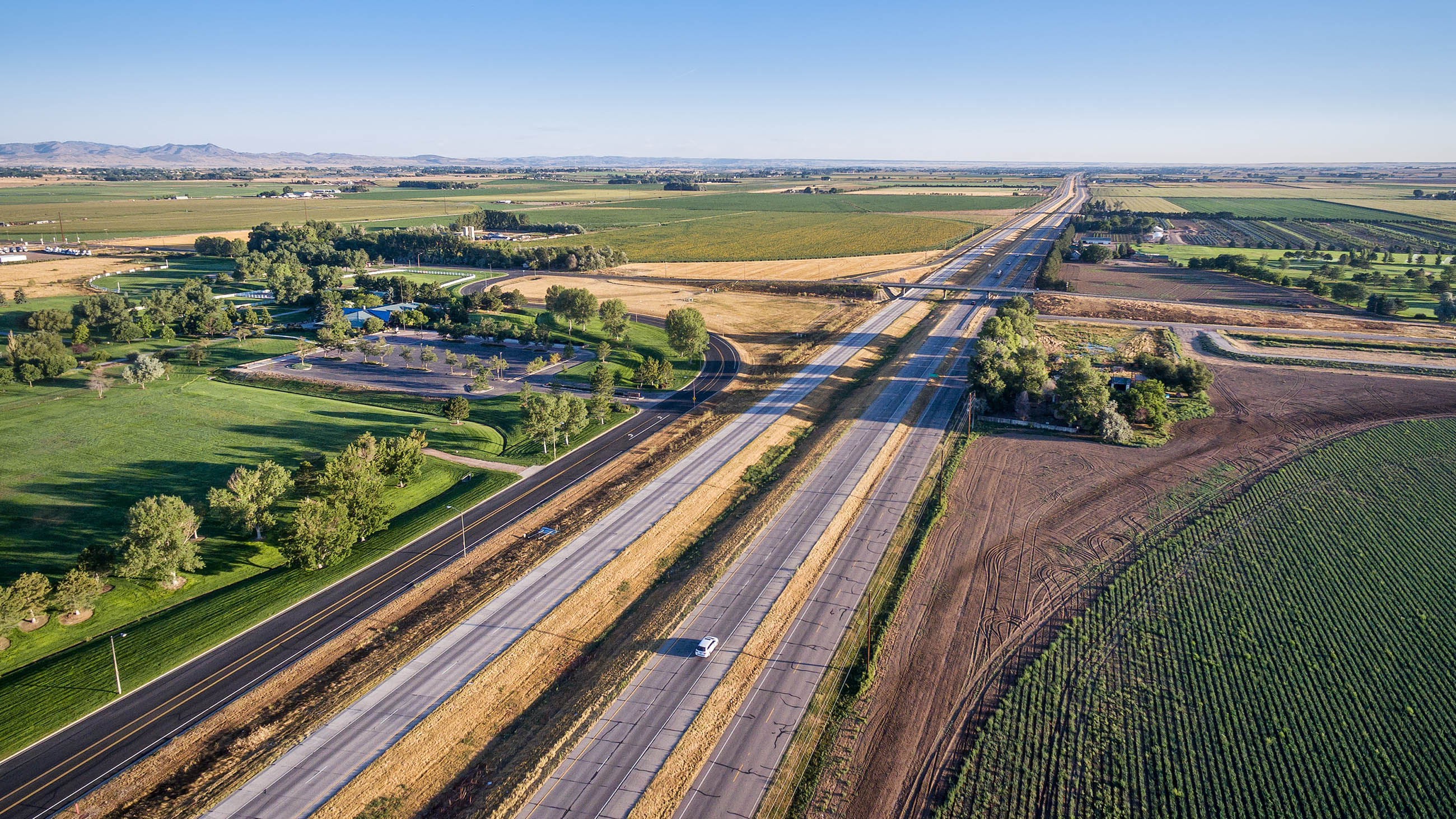Afriend of mine recently said that he found it easier to imagine the end of the world than to imagine the end of capitalism.

I thought about this idea a great deal as I was doing research for my book “Food Fight: GMOs and the Future of the American Diet.” The deeper I looked, the more it became clear that many of the serious environmental problems the world currently faces — climate change, soil depletion, chemical pollution, species loss — are intractable not because of a failure of human intelligence but because of a failure of human imagination.
Or perhaps, more precisely, a failure of memory.
Remember: our current precipitous ecological decline only began accelerating about 75 years ago, a change driven by World War II. As much as the war tore holes in the heart of Europe and Asia, it also, in its aftermath, hit the rest of the world like a meteor. In the years after the war, the United States decided that the best way to defend itself against future invasion was to build a monumental interstate highway system. This network of wide, highly engineered superhighways — modeled after the German Autobahn and named for President Dwight Eisenhower — would allow the free deployment of armored vehicles from Maine to Florida, from Washington to San Diego, and everywhere in between.
So far so good. The U.S. has not recently been invaded by land. But in a dramatic example of unintended consequences, the interstate highway system, designed to keep the U.S. safe, has been a root cause of dramatic global political and environmental instability. The interstates — all 47,000 miles of them — have not just been used for troop transport, of course. As larger and larger roadways were constructed, they not only connected major cities, but led to an endless series of concentric ring roads around cities. This allowed more and more Americans to move out into the seemingly infinite number of housing developments built in the suburbs.
Again, so far so good. This was the American Dream: the big house in the suburbs; the two-car garage; the home full of flat screen televisions; the whole bit. And the cost?
Most obviously, all these roads, and all these cars, made the U.S. a country of commuters, utterly dependent on fossil fuels to drive their vehicles, and to heat and cool their big houses. But fossil fuels were also turned into everything from cosmetics and wall-to-wall carpeting to baby pajamas and plastic water bottles — all the innumerable consumer products we now can’t imagine giving up.

The GMO controversy is more complicated than meets the eye, the author noted in his book. So, too, are myriad other debates of modern civilization.
It has become a cliché to remark that Americans make up less than 5 percent of the world’s population yet consume 25 percent of the world’s energy. This is where that number was born. The myriad problems associated with our dependence on fossil fuels (warfare in oil-producing countries; climate change; rising sea levels, ocean acidification, species loss) can all, in large measure, be traced to the explosion of growth that sprouted along the American interstate highway system.
There’s more. All those suburban roadways and housing developments also gave rise to a colossal shift in land use known as the Great American Lawn. There are now some 63,000 square miles of turf grass in the U.S., and lawn care has become something of a national obsession.
So far so good. But lawns require the cutting of forests, the removal of native plants, and for many people extensive use of lawn chemicals. One such chemical is 2,4-D, a popular herbicide you can find in any hardware store. 2,4-D, in case you haven’t heard of it, was a primary constituent of Agent Orange, the defoliant used in Vietnam that left a terrible legacy of illness among American soldiers and Vietnamese civilians alike. While most of the issues associated with Agent Orange are linked to its other herbicide component, 2,4-D is itself considered a possible human carcinogen.
Cornell’s David Pimentel has estimated that 72 million birds die each year from exposure to pesticides, a number that does not include those that die because a parent was killed by pesticides, or birds killed by eating contaminated insects or worms. The number may be closer to 150 million. All told, nearly a third of the country’s 800 bird species are endangered, threatened, or in serious decline.
But it even goes beyond this. All those roads, and all those suburbs, had to be built on top of something, and they were: They were built on top of farms. Since the end of the war, the U.S. has lost four million small farms. A hundred and fifty years ago, more than 64 percent of Americans worked on a farm. Now, the number is 2 percent. Replacing local food production has been a globalized food network — built on roads, and shipping lanes, and air routes — radiating out from the industrial farms in the American Midwest. There are currently some 230 million acres of monoculture corn, wheat, and soybeans in the U.S. (and millions more being developed in deforested land in South America) all of which are used to provide the high-calorie, processed meals that Americans have come to demand. Americans spent $117 billion on fast food in 2014; virtually all of it is constructed, one way or another out of GMO corn, soybeans and canola oil. We drink, on average, 45 gallons of soda per person, per year, virtually all of it sweetened with GMO corn. We eat some 9 billion animals a year, almost all of which are raised in factory farms and fed GMO corn and soybeans. Ninety percent of American kids visit a McDonald’s once a month month. By 2019, the global agrochemicals industry is estimated to be worth $261 billion.
The costs of this shift in the way we eat have been as broad and dramatic as the costs of our dependence on fossil fuels. For starters, Americans eat a far less diverse diet than we did before the war: in the 20th century, the varieties of fruits and vegetables sold by commercial American seed houses dropped 97 percent. All those millions of acres of corn and wheat and soybeans have also led to a tremendous increase in the use of agricultural chemicals and the genetically engineered crops designed to withstand this chemical onslaught. Even the most “benign” of these chemicals, like Monsanto’s Roundup, are known to cause human and environmental damage. The cancer research arm of the World Health Organization recently declared Roundup’s primary ingredient glyphosate, to be a “probable human carcinogen.” Between 1996 and 2011, the use of glyphosate on American food crops grew by 527 million pounds.
So the question remains: Is it possible to imagine, or to remember, a time when we didn’t need all of this? All of these lawn chemicals and plastic bottles and monoculture food crops that do little more than make corn chips and fast food burgers?
In recent years, I’ve gotten involved with a group of scholars and scientists at The Land Institute, a renowned agricultural research station in Salina, Kansas, where — led by the MacArthur ‘genius grant’ winner Wes Jackson — we are trying to construct a new academic discipline called “Ecospheric Studies.” The idea is to try and undo 10,0000 years of agriculture, 500 years of higher education, and 75 years of dependence on fossil fuels. Rather than viewing the world as a Newtonian/Cartesian “machine” that can be manipulated to efficiently provide material benefits only to human societies, the idea is to try to reorganize human desires — everything from the way we shop to the way we eat — to fit within the natural systems from which all things emerge. Plant scientists at The Land Institute, for example, are developing “perennial polyculture” crops that are modeled on prairie ecosystems — growing food without destroying soil or water; without needing excessive herbicides or fossil fuel fertilizers; and without depending on global conglomerates for GMO seeds.
This “ecospheric” view — taking cues from ecology, but also from indigenous cultures the world over — seeks to consider the natural world itself as a model for human behavior. Critically, it seeks to introduce a sense of humility into the human project — and especially in fields like agricultural science and environmental engineering — to encourage embracing a sense of limits on what we can take from the world, and even on what it is possible to know about the world. There are ways of being — more benign, humble, perhaps spiritually aware — that are radically different from the competitive, extractive, and aggressive ways we’ve chosen to live for the past half-century. The question is, can we imagine it? Can we even remember it?
McKay Jenkins is a professor of English, Journalism and Environmental Humanities at the University of Delaware. He is the author of seven books, including “ContamiNation” and “Poison Spring.” A former staff writer for the Atlanta Constitution, he has also written for Outside, Orion, and The New Republic.











Comments are automatically closed one year after article publication. Archived comments are below.
While your at it went not add listening to classical music as another reason for the decline. It has just about as much validity as the rest of your treatise.
I remember living in Little Rock in the nineties and 2010’s. We could see the city expanding always further west, and trees and forest receding. We had chosen to live in an older part of the town, close to the city center, that used to be a suburb in the old days, because it still had sidewalks and you could walk to a few shops. Probably a “suburb” that was designed before cars took over the city.
But this is not the only thing that happened: lately, downtown began to change and high-rise luxury apartment complex started to appear and replace old parking lots that weren’t producing enough money.
But given the price of these flats, only very few individuals will probably afford living downtown. The rest will be maintained out of the virtuous center that use e-scooters and walk to the shop, and condemned to the pollution of their gasoline powered cars.
The U.S. abandoned city-building in favor of population dispersion. This gave rise to the inefficient suburban sprawlscape of today. It looks densely built, but by historical household size standards and worldwide city population densities, few people are there. The private, individual auto is the only way to cover the built-in distances produced by suburban zoning. That this is a consequence of decisions from the Cold War is a little known history. As a regional planner beginning in 1973, I noted that in spite of all the urban talk, lot sizes got bigger, densities lower.
I posited an American “fear of density” in the 1990s. My planning peers did not agree. In 2004 I learned about Cold War “urban vulnerability” which explained the pattern shift. The paper is here on my Google drive: “Reduction of Urban Vulnerability: Revisiting 1950s American Suburbanization as Civil Defence”-Kathleen A. Tobin-UK Journal: Cold War History https://goo.gl/4sXjbg
We are only 68 years into the auto-suburban century and it is failing. Correction will take several hundred years. Once subdivided, land is not easily reassembled for redevelopment. To get the American transportation options of walking, cycling, taxi, bus and rail, and households with no car, or just one, as was the case in cities and towns of the 1940s, the U.S. would have to go back to 1940s land use patterns.
That would undercut the value of existing and planned development. Those that recognize the contextual necessity may act. Before ordinances can be changed, comprehensive planning must articulate that future. Neither simple nor easy. The necessity will have to be recognized.
you might find this interesting:
GOING DOWN THE ROAD
Most things in our world have an industrial history. Behind the computer, the T-shirt, the vacuum cleaner is an industrial infrastructure fired by energy (fossil fuels mainly). Each component of our car or refrigerator has an industrial history.
Mainly unseen and out of mind, this global industrial infrastructure touches every aspect of our lives. It pervades our daily living from the articles it produces, to its effect on the economy and employment, as well as its effects on the environment.
Most of us don’t thnk about the road we are on. It is just there unless it has huge potholes or other problems. It allows our mobility from home to work to shopping to play or even to the hospital. It allows us to visit friends and relatives near and across the country. Huge trucks criss cross this country on this dark ribbon bringing goods and food. It allows us to drive to the airport. It allows the planes to take off and land.
ASPHALT IS EVERYWHERE AND WE DON’T REALLY SEE IT.
See videos and more at: http://sunweber.blogspot.com/2016/11/going-down-road.html